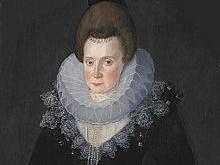Lauderdale House once played a small part in a tragic royal tale. In 1611 Arbella Stuart, a close cousin of King James I, stayed at Lauderdale House for six days. Arbella was an unexpected visitor, travelling from London to Durham on the orders of the fearful King.
Arbella had a reasonable claim to the throne of England, which made her a threat to James. A few weeks after her stay here, she was sent to the Tower of London for the rest of her life. Arbella’s crime? Choosing an unsuitable husband.

